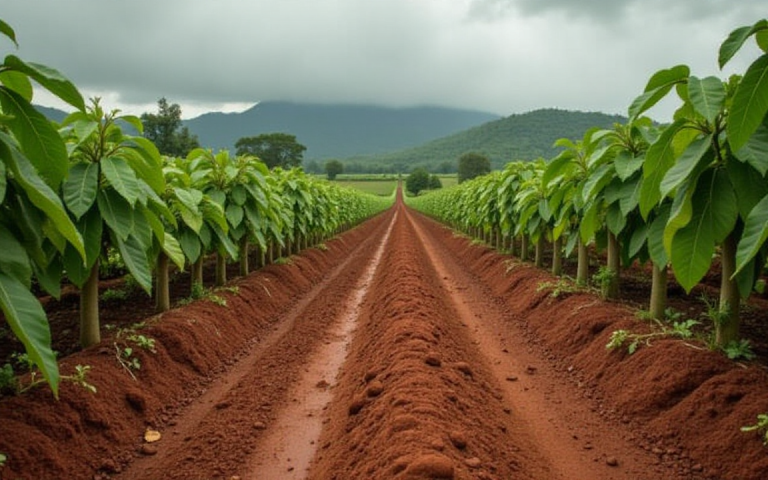Ecuador is poised to achieve a significant milestone in the global cocoa market, with projections indicating a production exceeding 650,000 metric tons in the forthcoming 2025-26 season.
This substantial increase could potentially elevate Ecuador to the position of the world’s second-largest cocoa grower, surpassing Ghana, a traditionally dominant player in the industry.
This optimistic outlook was shared by the chairman of Ecuador’s cocoa exporters association, highlighting the country’s growing influence in the production of this vital ingredient for chocolate.
Rise in prices
Ivan Ontaneda of Anecacao told Reuters in a report that global cocoa prices have significantly increased.
This rise has prompted farmers, with support from both public and private sectors, to boost investments in their land, leading to higher yields.
Earlier this month, a Reuters poll predicted Ghana’s cocoa production would reach only 600,000 tons in 2025-26.
The country is currently struggling with illegal gold mining on cocoa farms and the spread of swollen shoot disease.
The global cocoa market experienced an unprecedented surge in prices last year, with rates more than doubling to reach an astonishing record high of over $12,000 per ton.
This dramatic escalation was primarily driven by severe supply shortages stemming from failed harvests and widespread disease outbreaks in the Ivory Coast and Ghana, the two West African nations that collectively account for approximately half of the world’s cocoa production.
These adverse conditions significantly impacted cocoa yields, creating a substantial deficit in the global supply chain and subsequently pushing prices to historic levels.
Price volatility
However, cocoa prices have experienced a notable decline of approximately one-third this year, a significant shift in market dynamics.
Despite this recent downward trend, it is crucial to recognise that current price levels remain historically elevated.
This suggests that even with the recent correction, cocoa is still trading at a premium compared to long-term averages.
Several factors could be contributing to this sustained high pricing, including ongoing supply chain challenges, fluctuating global demand, and the impact of climate-related events on major cocoa-producing regions.
The interplay of these elements creates a complex market environment where price volatility remains a key characteristic.
According to Ontaneda, Ecuadorian farmers receive approximately 90% of the global price for their produce.
In stark contrast, farmers in Ivory Coast and Ghana typically receive a maximum of 60-70% of the world price.
Ecuador’s sustainable farming advantage
Ontaneda added:
Ecuador’s production has shown steady growth (for) years. Ghana’s production has been volatile.
Ecuadorian cocoa thrives in agroforestry systems.
These systems are vital for biodiversity and effectively prevent the spread of diseases commonly found in monoculture farming, as observed in West Africa.
Cocoa is grown in these systems alongside shade trees, coffee, plantains, and fruit trees.
Ontaneda stated that cocoa farms in Ecuador currently produce 800 kilograms per hectare annually.
The country’s output for the 2024-25 season exceeded 570,000 tons, with an anticipated increase to 800,000 tons by 2030.
Industry data indicates that West African nations, including Ghana, have an average cocoa yield of slightly less than 500 kilograms per hectare.
The post Ecuador set to become world’s second-largest cocoa producer appeared first on Invezz

